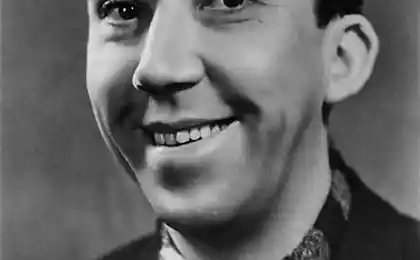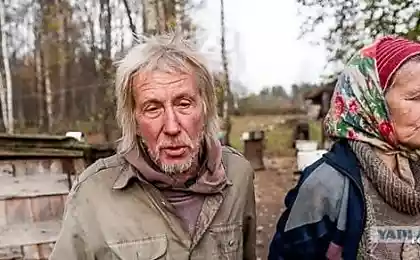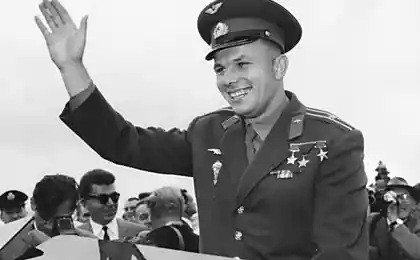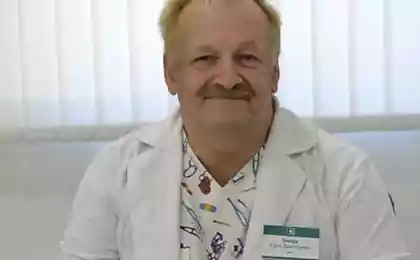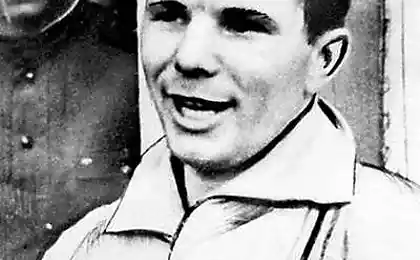453
Implemented there are no utopias — scholar Yuri Leving of the perfect cities
Scholar and Nabokov Yuri Leving on the concept of ideal cities
— What city on Earth can be called the realized cities-utopias, and why? — Realized there are no utopias is an oxymoron. But if you search well, luxuriously built city-utopia can be found in a computer game or in a big-budget sci-Fi Thriller. Maybe even in the architectural magazines. The image of the city in the film, however, has varied quite sluggish, at least the scenery utopian space in expressionist "metropolis" or the constructivist "Aelita" 1920-ies for me, more convincing in its fantasy than the Hollywood "hunger games" of 2013, with their attendant machinery. It's not about special effects, and the ability to expand the horizons of what is expected.
At all times, urban designers max was able to carry out the point projects, able to capture the imagination of the contemporary, from the Eiffel tower to skyscraper-ogurcov London. However, to offer a holistic solution within a given, even in a medium-size city with shifts in infrastructure and scrapping boilerplate stereotypes — this is impossible for several reasons, primarily economic, and it has proven a failed comprehensive architectural designs of totalitarian regimes.
— Unreleased — what more would you like to see implemented?
— Recently in my feed on Facebook I noticed someone exhibited a fragment from the Soviet television series of my youth "guest from the future" — the video boy nick falls to Moscow of the future, walks with a shopping bag in hand between machines with free sparkling water and looks in a single aircraft similar to cheesecake. Further, the Director organizes the special effects pioneer flight over red square. I have not noticed that in the shot of the mausoleum, and it is a characteristic detail for a film made in 1984 on the verge of great change. I'm afraid that, imagine the creators of the futuristic movie for the poor, as little change in three decades the archetypal locus of the capital (where the "starts of the Soviet land"), it would have been sad.
If to speak about a single urban projects, the post-Soviet space with their palimpsesting layers of multiple realities in one and are nedovolen utopias. In any new city I go, I'm pretty sensitive to the local toponymy: in Padua, it is impossible to get rid of a strange feeling when I walk on the via Dante Alighieri and turn onto via Giuseppe Verdi. Having been a couple of years ago in his native Perm on Karl Marx street, where a child visited the library. Pushkin, described by Pasternak in "Doctor Zhivago" as a place of work Lara, I found that a piece of the street suddenly became known as the Siberian tract. I am for the restoration of historical justice, but only for consistent, otherwise we are dealing with a snake that is not fully nested. In Oakland, by the way, I bribed the fact that modern new Zealanders are very sensitive to local heritage, so most street names accurately retain the aboriginal color. In the area under the characteristically utopian name mount Eden street Owairaka you turn on Taumata road, reach, Kiwitea street... and so on.
— It is clear that utopia that responds to the challenges of the times in which he lived. What project of an ideal city would be relevant now?
I'm not a architect and not a designer, and scholar, so I'm curious to see how the culture reacts to what you call "call time". Ten years ago I published a book on Nabokov and poetics of Russian urbanism, it's called "Station — Garage — Hangar". I was interested to learn what effect the literary texts of contemporaries, Nabokov listed in the title loci, because they literally blew up the urban fabric in the late nineteenth — the beginning of the last century. In the late 19th century, the story of electricity and its "divine origin" of the dramatic tension is not inferior to the Promethean myth of fire and was seen as a wonderful way of transforming reality. In the first third of the twentieth century, literature began to aggressively explore the poetics of the new ways to travel, whether by air or under the ground. Based on the experience of reading, I dare say that as the project of "ideal city" and its structure have been already invented and just continue to be described with different degree of variation — from the tower of Babel on the canvas of Pieter Bruegel the Elder to Sugar Kremlin Vladimir Sorokin.
— You have a dream about an ideal city? What is it?
— From the window of my canadian home — so — visible braid Bay of the Atlantic ocean. Serenely moored boat with orange buoys on the sides. On the opposite Bank of the hill run up smoothly, like clockwork, miniature cars. Seagulls, clouds. For me it is a very happy landscape.
In a sense, Jerusalem is a city-utopia. Why is it so? As usual the view of the city as a futuristic project?
Jerusalem for three thousand years the history of this city corresponded countless times. We still did not even understand the etymology of its name, not to mention all the sacred connotations of the place itself. But a futuristic project the city can be considered only from afar, in real he lives according to the laws of any urban environment — it's a romantic gateway, Bohemian neighborhoods and unexpected, indoor greenery, patios, pancreas and restaurant streets in the center and gangrene worst, abandoned houses in the suburbs.
— What texts, you can see the Jerusalem of the future? How does this compare with what is Jerusalem now? Where are those points in the city where the tourist or the researcher sees the future with your own eyes?
— Using the same old as the world of the book — it's called the Bible. In modern Jerusalem have to settle for, well, let's say, a view of the Jerusalem tram, successfully combining retro and modernism, which was painfully built and finally launched to the General joy on the streets of Jaffa, past the Old city walls, and further North. In addition, if it is enough to tread the streets of this town (and I have come here to live in 1992 and remained there nearly ten years), then you will inevitably have some routes, are intimately related to private biography, which is overlaid with mythology and literary matrix, — because all this creates the unique aura of the city, the genius of the place.
With regard to the points in Jerusalem, where the tourist or the researcher presented a speculative future, here everything is simple: the heart of the city is located on the Temple mount Moriah. Every Jew, if he had at least once in a lifetime bird's-eye view of the city from Lookout mountain, during the last twenty centuries would have to experience a happy state of bifurcation, when seeing double: here you see the hill, where stand the temple, but instead there is either a gaping void or (late seventh century), the Golden dome of the Arab mosque.
Incidentally, it is strange that none of the modern conceptual artists still have not guessed to make the laser light projection on the Temple mount, which resulted in the air materialized would be a majestic architectural structure that embodies the divine abode. I don't even believe that such a performance should warp the religious feelings of Muslims.
"As a project of "ideal city" and its structure have been already invented and just continue to be described with different degrees of variability"
— It is interesting that the festival participants studied the book of which you do before you have been contacted by the organizers of the festival, not heard. It is the novel utopia artist Boris Schatz, the founder of the Academy "Bezalel", which sought to create a national Jewish art. What's in this book and how it relates to utopian ideas more famous authors?
— The merit of opening the text of a long-forgotten novel "the rebuilt Jerusalem" belongs entirely to the curator of the educational project "Eshkolot" Simon a Paris. Even connoisseurs of the artist Boris Schatz not familiar with the novel. The only Hebrew edition of 1924 has long been a rarity, its a digital copy is in the collections of the National library of Israel. Prose, which is written a novel, I must admit, not excellent quality. The main intrigue is not even in the story (and its action takes place in Jerusalem in 2018), and how intricately Boris Schatz, the son of a Melamed from Kovno, was able to mix everything in her debut literary palette of a bouquet of colorful traditions, from the classics of the genre of utopia like "Sun City" and Campanella's "City without a name" Odoevsky to the motives of "the Fourth dream of Vera Pavlovna" Chernyshevsky — giving the book a fair dose of Zionist ideology, derived by him mainly from the political and economic Manifesto of Theodor Herzl "the Jewish state" (1896). Visionary of the future Jerusalem in the performance Maca read today as a mixture of plans of cities Le Corbusier with technologically advanced kibbutzim.
However, like any true utopia novel this is addressed not so much in the future, but raises painful questions really: what is the social status of women in Jewish society, as the relation of the sexes, how there are gardens and children's schools, how public institutions from the Museum to the synagogue and so on.
— You were born in Perm, lived in different cities around the world, but mention something like that at home feel only in Jerusalem. Why?
— A few years ago, just before the winter trip to Venice, I got the guidebook "Venice of Joseph Brodsky". The publishers have made the book a detailed city map with marked on it the places associated with the poet. My efforts to follow the proposed memorial route practical without success. In Jerusalem the excess water of the Venetian and the winding stone streets kompensiruet hills terrain and colonialist-arheologicheskaya development — however it is the only city in the world where I don't need the map. And not because I am particularly well-versed, on the contrary — according to my Venetian experience. Just each of us working internal compass, and best of all I have it tuned to this area, so in Jerusalem, I always trust the feet. In addition, I want to believe, if anything, mystical memory of the place, what is here in sandals or no — Chagall and my ancestors.
Source: theoryandpractice.ru
Heather garden — the atmosphere of ancient myths and legends in your area
20 small tips to maintain the beauty
